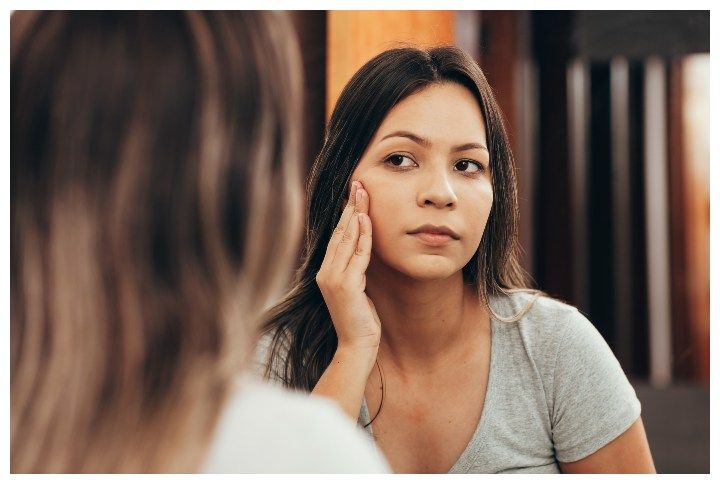
In a perfect world, there would be no discrimination, Beyoncé would be the president, and we’d have all flawless skin. Unfortunately, I can’t do much about the first two ideal situations, but I might just be able to help you out with the third. A while ago when I was scrolling through Malini’s Girl Tribe on Facebook, I came across a very interesting thread. It was about post-inflammatory hyperpigmentation (PIH). Before you get freaked out by the sound of it, you should know that it can happen to anyone and it’s treatable. If you want to know more about hyperpigmentation, you’re at the right place.
What Is Hyperpigmentation?
In the simplest of terms, hyperpigmentation is the discolouration or darkening of the skin. It’s caused because of overexposure to the sun or skin conditions like acne, eczema, psoriasis, etc. This skin condition is actually very common, and it affects every skin type.
What Are The Types Of Hyperpigmentation?
It is an umbrella term because it has three different variations which are:
- Post-Inflammatory Hyperpigmentation (PIH): This is caused because of the inflammation of the skin. Whenever we get a pimple, rash or injury our skin becomes inflamed. One thing to remember about PIH is that the more inflamed your skin is, the more pigmentation will be caused. PIH is usually dark brown or red in appearance.
- Post-Inflammatory Erythema (PIE): It may seem like it’s the same as PIH but it isn’t. Unlike PIH, this type of pigmentation takes place because the inflammation irritates the surrounding blood vessels. This type of pigmentation will be bright pink or red in appearance. Usually, people with lighter skin tones are more prone to PIE.
- Melasma: This type of hyperpigmentation is caused by UV exposure, hormonal imbalances and genetics. It appears in spaced out, dark blotches across your skin.
What Can You Do To Treat It?
Fortunately for us girl tribe members, we have the celebrity dermatologist, Dr Rashmi Shetty as a part of our group. Here’s what she recommends to deal with hyperpigmentation.
- Sunscreen: Make your dermatologist proud and keep your skin protected with a good sunscreen. One thing I’ve learned while dealing with my acne and hyperpigmentation is that sunscreen is a must. No matter what’s the season or whether you’re indoors or outdoors, you have to wear sunscreen. Trust me, in the long term, you’ll be doing yourself a huge favour. Wearing sunscreen will protect your skin from the harmful UV rays of the sun, hence preventing inflammation AKA the root cause of acne and hyperpigmentation. Use one with SPF 50 like UVDoux or La Shield anti-pollution sunscreen.
- Check Your Thyroid: Get your thyroid checked every 3-6 months since hyperthyroid is also a cause for hyperpigmentation. Getting your thyroid checked will help you find out whether your THS levels are normal or not.
- Use Products With Correct Ingredients: Add some products with azelaic acid and kojic acid in your nighttime routine. Using products with these ingredients at night will help fight discolouration. During the day you can use a serum with Vitamin C and hyaluronic acid under your sunscreen.
- Don’t Pop Pimples: As tempting as it may seem, popping pimples will always be a bad idea. Not only are you spreading bacteria and causing scars, but you’ll also be worsening your pigmentation. Try and avoid anything that will increase the inflammation of your skin.
- Visit Your Doctor: If your hyperpigmentation is stubborn and persistent then it’s best you pay a visit to your dermatologist.

Are you ready to say goodbye to your hyperpigmentation?
Follow @missmalinibeauty on Instagram for more updates and join Malini’s Girl Tribe on Facebook, a safe space where you can be yourself without any judgement.

